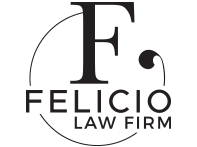
For many property owners, severing joint tenancy is an important step when circumstances change. While holding property as joint tenants might seem simple at first, it comes with significant consequences: if one owner dies, the property automatically passes to the surviving owner, regardless of what the deceased’s Will says.
That arrangement can suit some families, but in situations like second marriages, blended families, or when co-owners want more control over who inherits their share, it can cause real issues. Joint tenancy can be ended by one owner acting alone, all owners agreeing together, or through the owners consistently acting like they own separate shares. These methods convert ownership to a tenancy in common and allow you to direct your share through your Will or broader estate plan.
Understanding Joint Tenancy and Its Implications
Joint tenancy creates a unique form of property ownership where all owners hold equal interests with identical rights. The defining characteristic is the right of survivorship, which means that when one joint tenant dies, their interest automatically passes to the surviving joint tenant(s), regardless of any contrary provisions in their Will.
This automatic transfer occurs outside the probate process, which can seem advantageous initially. However, it creates significant complications in family law matters and estate planning, particularly for blended families where individuals may want their children from previous relationships to inherit their property share.
Other features of joint tenancy include:
- All owners have equal rights to use and occupy the entire property.
- Each co-owner holds an identical share or interest in the property.
- Ownership comes from the same document or transaction.
- All owners’ interests start at the same time.
When Severing Joint Tenancy Becomes Essential
Severing joint tenancy is often a wise step in family law and estate planning. It prevents a former partner from automatically inheriting property if one owner dies after a relationship breakdown.
For blended families, the severance allows parents to direct their share to children from previous relationships, which is especially important when significant property values are involved.
Consider these common scenarios where severance proves beneficial:
- Second marriages where each spouse has children from previous relationships
- Business partnerships requiring clear succession planning for heirs
- Investment properties held with non-family members
- Family disputes where relationships have deteriorated
- Tax planning strategies requiring specific ownership structures
By ending a joint tenancy, property is ensured to be distributed according to the owner’s wishes, protecting the interests of all intended beneficiaries.
Methods of Severing Joint Tenancy
Unilateral Severance
In NSW, one joint tenant can sever the tenancy without the others’ consent. This is done by preparing and registering a transfer form that converts the severing party’s interest to a tenancy in common, removing the right of survivorship. While useful in difficult relationships or urgent estate planning, registration usually notifies the other joint tenants of the change.
Mutual Agreement
Joint tenants can also end their tenancy by mutual agreement, with all parties executing transfer documents together. This approach provides clarity, avoids disputes over timing, and is often more cost-effective when everyone cooperates.
Other Means
Certain circumstances automatically sever joint tenancy without specific action by the owners. These situations include:
- Bankruptcy of one joint tenant, causing their interest to vest in the trustee
- Conduct by the owners that shows they treat the property as divided into separate shares, such as referring to “my half” and “your half,” which can be taken as severing the joint tenancy even without formal paperwork.
Understanding these severance triggers helps property owners anticipate potential changes to their ownership structure and plan accordingly.
Legal Requirements and Documentation
To end a joint tenancy, formal documents must be correctly drafted to show a clear intention to sever it. Ambiguous language can make the severance ineffective, so professional preparation ensures full compliance with legal requirements.
The documentation must include:
- Clear identification of the property and all current joint tenants
- A clear declaration of the decision to sever the joint tenancy
- Proper execution with appropriate witnessing and signing requirements
- Accurate legal descriptions matching registered title documents
- Compliance with obligations to pay stamp duty and registration fees.
Remember, the severance document must be registered with the land registry to take effect; unregistered documents do not sever the joint tenancy. Processing can take days to weeks, so timing is important in urgent situations.
Impact on Estate Planning and Wills
How you own property affects what happens to it when you pass away. If you own property as joint tenants, you cannot leave your share to someone in your Will. This is because the right of survivorship applies.
If you instead hold the property as tenants in common, each owner’s share becomes part of their estate. This allows you to leave your share to beneficiaries under your Will, use trusts for children or vulnerable beneficiaries, and make more flexible tax and succession plans.
Some key estate planning advantages of holding property as tenants in common include:
- Freedom to direct your share of property in your Will
- Ability to create trusts for children or dependants
- Strategic tax planning opportunities
- Greater protection from creditors in some cases
- Clearer guidance for executors in administering the estate
It’s also important to regularly review your superannuation death benefit nominations and life insurance policies, as these do not automatically follow the terms of your Will. This is especially crucial in blended families, where careful planning ensures children from earlier relationships and a current spouse are both properly provided for.
Considerations for Family Law Matters
In family law property settlements, severing joint tenancy can be strategically important. It prevents a former partner from automatically inheriting property if one party dies before settlement, protecting each owner’s estate planning intentions. However, timing is crucial, as courts may view severance during proceedings as an attempt to defeat legitimate claims, so professional legal advice ensures it’s done correctly.
Tax Implications and Financial Considerations
Ending a joint tenancy can trigger tax consequences, including capital gains tax on appreciated property and potential stamp duty, which vary by circumstances.
Financial planning considerations include:
- Income tax implications for rental properties
- Estate planning tax strategies post-severance
- Superannuation death benefit integration
Getting professional tax advice helps you structure the severance in a way that avoids unnecessary tax problems while still achieving your estate planning goals.
Practical Steps and Professional Assistance
- Assess your goals: Ensure severing joint tenancy aligns with your estate planning, property objectives, family circumstances, and potential tax implications.
- Prepare documentation carefully: Transfer forms must clearly state the intention to sever and comply with statutory requirements. Professional preparation reduces the risk of errors that could invalidate the severance.
- Complete registration: Submit properly executed documents to the relevant land registry. Processing times and fees vary, but professional guidance can streamline the process.
Potential Complications and Pitfalls
Complications can arise if transfer documents are incorrect or unclear, leaving the joint tenancy intact and causing problems later.
Common pitfalls include:
- Insufficient legal descriptions causing registration rejection
- Improper execution, invalidating the transfer document
- Timing conflicts with other legal proceedings
- Third-party consent requirements being overlooked
- Tax implications not being properly considered
Additionally, timing can complicate severance, particularly during active family law proceedings, as it may conflict with existing court orders. Furthermore, third-party interests, such as mortgages or caveats, can create additional hurdles, often requiring extra consents.
Conclusion
Severing joint tenancy gives property owners greater control over their estate planning, eliminating the automatic right of survivorship and allowing property interests to be directed through Wills. For blended families or those involved in family law matters, it is often a crucial step to ensure testamentary wishes are respected and loved ones are provided for.
If you have questions about joint tenancy severance or are ready to begin, our experienced Conveyancing Lawyers Central Coast, Family Lawyers Central Coast, and Wills & Estate Planning Lawyers Central Coast can guide you through the process. We ensure all legal requirements are met while protecting your interests and those of your beneficiaries. Contact our friendly team today.
















